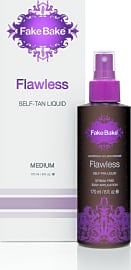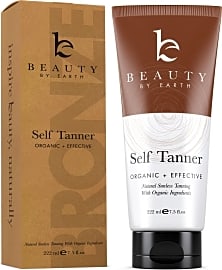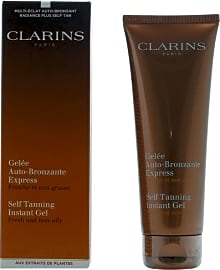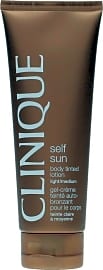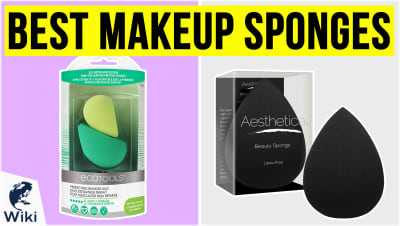The 10 Best Self Tanners

This wiki has been updated 41 times since it was first published in March of 2015. Get a jump start on summer or touch up your existing tan with a little something from our selection of self tanners. If you're worried about the possible harmful effects of excessive sun exposure but enjoy a healthy glow, one of these will be perfect for you. We've included natural and organic products so you can avoid nasty chemicals like parabens and phthalates, too. When users buy our independently chosen editorial picks, we may earn commissions to help fund the Wiki.
Editor's Notes
March 28, 2020:
Self tanners have come a long way in recent years. No longer do you have to worry about coming away with a garishly orange, unnatural result. Even with many of the more affordable options on the market, you can achieve a red carpet ready, sun-kissed glow. In line with beauty industry trends of environmental consciousness and health-centric formulations, most of these do not contain any nasty chemicals such as phthalates or parabens, and you can count on finding the cruelty-free logo on most of the bottles that made the cut, too.
It probably won't come as a surprise to anyone viewing this list, but it's still worth noting that these lotions and serums don't require sun exposure, which should come as a relief to those with especially fair skin who are at greater risk of suffering the damaging effects of the sun's rays. That being said, if you do prefer bronzing the old fashioned way, consider picking up a bottle of tanning oil instead — just make sure you limit the amount of time you spend in the sun to preserve the health of your skin.
With regard to updates, Grace & Stella Co. Bronze Doll, Sun Laboratories Ultra, and Famous Dave’s Tanner have been removed due to complaints about unevenness and staining. In their place, we’ve added Jergens Natural Glow Instant Sun, Banana Boat Summer Color, and BareMinerals Faux Body because of high user reviews featuring positive notes about ease of application, moisturizing properties, and natural results.
Special Honors
Isle of Paradise Drops and Butter This duo includes both tanning lotion and serum oil drops which are designed to be used in combination to achieve a deep, natural-looking skin tone. Plus, there's a 90-day return window, which should provide plenty of time to determine whether or not you love the results. qvc.com
Mario Badescu Lotion One of the best things about this formula is that it's suitable for dry, oily, and combination skin, which means it's unlikely to cause flaking, greasiness, or breakouts. It's actually quite affordable, too, considering it comes from one of the most popular brands in beauty. mariobadescu.com
Tan Luxe The Face An Allure Best of Beauty Award winner, this silky-smooth serum produces remarkably even results and is made without toxins such as phthalates, parabens, and sulfates. It's also cruelty-free, so you can feel good about using it on a regular basis. sephora.com
What Self Tanner Does
Percentages typically range from 2.5 to ten, with 3.5 being the most common one.
Your skin is made up of two main layers; the epidermis, which is the outermost layer, and the dermis, which sits beneath the epidermis. Both real sun and "fake" sun (self-tanners) work on the epidermis. The way that real sun and self-tanning differentiate is by how they work on the epidermis. The epidermis itself has two layers. The outermost one is called the stratum corneum and the inner one is called the stratum basale. Sun penetrates the inner layer; that's part of why a real sun tan lasts longer than a fake one, but it's also how the sun causes sunburns. Self-tanner only darkens the outer layer, so it typically only lasts between three and seven days.
The ingredient in most self tanners that actually darkens your skin is called dihydroxyacetone (DHA). DHA is approved by the food and drug administration for topical use in sunless tanners; it's a simple 3-carbon sugar that, when applied to the skin, creates a chemical reaction with surface skin cells which darkens them. Since it only colors surface cells, these soon fall off, which is why self tanners work for a limited time. The percentage of DHA in your sunless tanner will affect how dark of a color it produces. Percentages typically range from 2.5 to ten, with 3.5 being the most common one.
Ultimately, the final aesthetic result will depend on the user's complexion, the technique used to apply it, and the formula used. It's always a good idea to use an exfoliator before applying self tanner to remove any dead skin cells, allowing the product to go a bit deeper into the skin. One should also avoid going in water or shaving for at least an hour after applying self tanner to make sure it stays on.
What To Look For In A Self Tanner
If you have particularly dry skin, look for a self tanner with moisturizing properties. The more hydrated your skin is, the better it will absorb the product. Self tanners that have moisturizer inside of them are also much easier to rub on your skin evenly, so you get a streak-free tan.
Some self tanners come with a spray gun, so you can apply the product just like a spa professional would.
If you are worried about applying it correctly, try a self tanner that lets you see the color immediately, rather than one that only yields color after it dries. This will help tremendously with an accurate application, especially for those using a self tanner for the first time. Some self tanners come with a spray gun, so you can apply the product just like a spa professional would.
If you have a busy social life and are regularly invited to events last minute, consider a self tanner that is fast acting; some can darken your skin in as little as three hours. For those who try to put only natural and organic ingredients on their skin, there are several self tanners that meet those specifications. Organic ones typically have ingredients that offer several benefits to your skin, too, like bacteria-killing witch hazel, healing aloe vera, and antioxidant green tea.
If you plan on wearing your self tanner outdoors, get one that has sunscreen in the mixture. Make sure you're informed on how the sun protection factor (SPF) works in your sunscreen, and exactly how much you need, based on your lifestyle and skin. For those who don't like overstocking their beauty cabinet, but are also fighting various skin conditions, some self tanners contain anti-aging and dark-spot correcting solutions, so one can consolidate two products into one.
The History Of Fake Tanning
Today, people associate tan skin with prosperity; either celebrities get tans on their expensive tropical vacations, or the elite purchase them in high-end tanning salons. But before the 1900s, tan skin was actually associated with poverty. A darker complexion was usually only found on people who had to work outdoors to make a living, like farmers and field hands, and the wealthy stayed inside, maintaining a pale complexion. Some people say the designer Coco Chanel popularized the tan among high society when she returned from a yachting trip dawning a bronze complexion.
By 1973, the FDA approved of the ingredient for self tanning products.
Tanning beds had, however, existed before Coco Chanel popularized tanning. After public health officials discovered the dangers of UV exposure in the early 1900s, people turned to tanning beds for their color. Eventually, health officials found out that tanning beds were just as harmful as actual sunlight, so people would try DIY home remedies to stain their skin, like leaving brown tea bags on their faces until their skin took in some color.
The person who discovered DHA, the active ingredient found in most self tanners today, was not in the beauty industry at all but rather the medical one. In the 1950s, a researcher named Eva Wittgenstein was treating children with a metabolic disorder, when she realized that the medicine she gave them would stain their skin. She soon realized that the staining ingredient was DHA. By 1973, the FDA approved of the ingredient for self tanning products. The first self tanning product to use DHA was called Man Tan and it came out a little after World War II.




